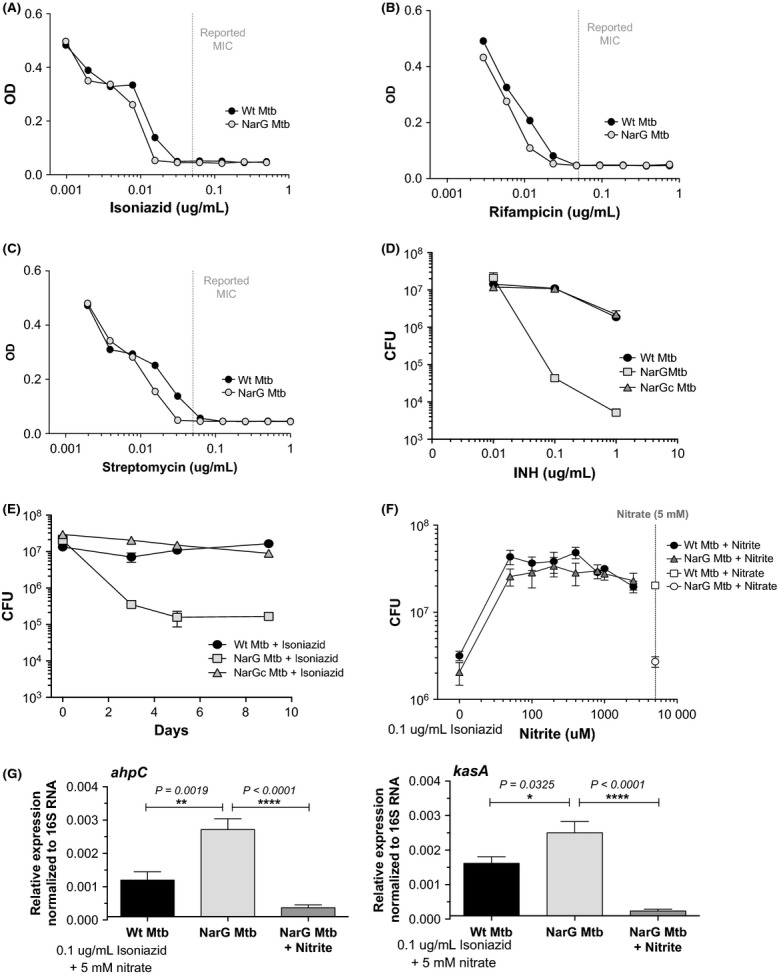Figure 3.

Impact of narG deficiency on susceptibility of Mtb to isoniazid in axenic culture. (A–C) Survival of wild-type and narG-deficient Mtb in the presence of the indicated concentrations of (A) isoniazid, (B) rifampicin, or (C) streptomycin in 21% oxygen over 5 days, initial (OD 0.1). Published MICs are provided for reference (Wanger and Mills 1996). (D, E) Survival of wild-type, narG-deficient (NarG), and complemented (NarGc) strains cultured in 1% oxygen (D) for 3 days with the indicated concentrations of INH or (E) as a function of time over 9 days with 0.1 μg/mL INH. (F) Survival of wild-type and narG-deficient Mtb incubated with increasing concentrations of exogenous nitrite or one fixed dose of nitrate, as indicated, over 3 days in 1% oxygen with 0.1 μg/mL INH. Results for (A–F) are means ± SEM representative of two independent experiments. (G) Expression of transcripts of ahpC and kasA by wild-type and narG-deficient Mtb treated with 0.1 μg/mL INH and 5 mmol/L nitrate for 16 h at 1% oxygen relative to 16S RNA. Where indicated, 2.5 mmol/L nitrite was also added. Bars indicate means ± SEM from three independent experiments analyzed by unpaired t-tests.
